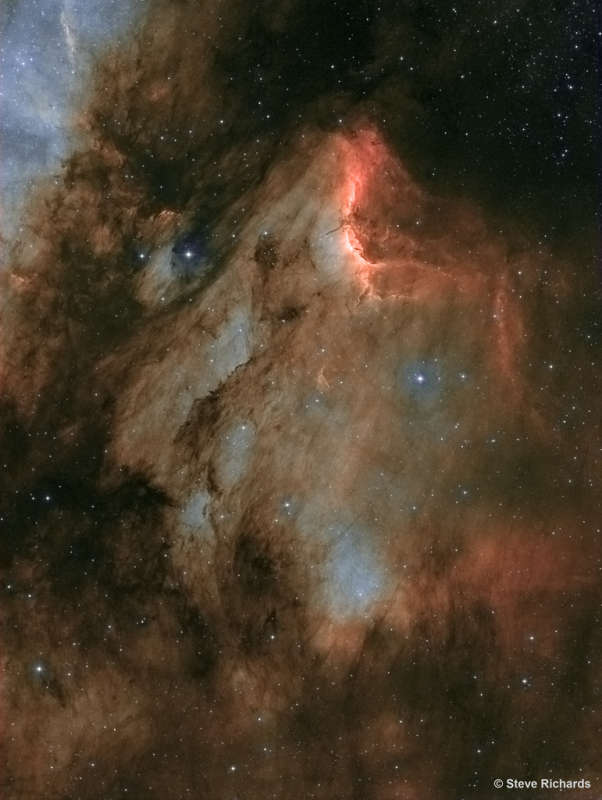Credit & Copyright: Steve Richards
(Chanctonbury
Observatory)
Explanation:
The recognizable profile of the Pelican Nebula
soars nearly 2,000 light-years away in the high flying constellation
Cygnus,
the Swan.
Also known as IC 5070,
this interstellar cloud of gas and dust is appropriately found
just off the "east coast"
of the North America Nebula
(NGC 7000), another surprisingly familiar looking emission nebula
in Cygnus.
Both Pelican and North America nebulae are part of the
same large and
complex star forming region, almost as nearby as the
better-known Orion Nebula.
From our vantage point, dark dust clouds (upper left) help define
the Pelican's eye and long bill, while a
bright front of ionized gas
suggests the curved shape of the head and neck.
This striking synthesized color view utilizes
narrowband image data recording the emission of hydrogen and
oxygen atoms in the cosmic cloud.
The scene spans
some 30 light-years at the estimated distance of the Pelican Nebula.
1999 2000 2001 2002 2003 2004 2005 2006 2007 2008 2009 2010 2011 2012 2013 2014 2015 2016 2017 2018 2019 2020 2021 2022 2023 2024 2025 |
Январь Февраль Март Апрель Май Июнь Июль Август Сентябрь Октябрь Ноябрь Декабрь |
NASA Web Site Statements, Warnings, and Disclaimers
NASA Official: Jay Norris. Specific rights apply.
A service of: LHEA at NASA / GSFC
& Michigan Tech. U.
|
Публикации с ключевыми словами:
IC 5070 - emission nebula - эмиссионная туманность - Туманность Пеликан
Публикации со словами: IC 5070 - emission nebula - эмиссионная туманность - Туманность Пеликан | |
См. также:
Все публикации на ту же тему >> | |
